
History of Show Globes
Although show globes were common in British and American catalogs and photographs during the nineteenth and twentieth centuries, their history may precede these documents and extend to centuries before our written evidence. Many myths of their origination exist, and although most are false, they do offer some interesting takes on the history and development of these mysterious globes.
Myth #1: Julius Caesar Saves the Apothecary
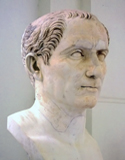
Probably the oldest myth involves Julius Caesar during his invasion of Ireland, circa 55 BCE. Supposedly, during his venture to Ireland, Caesar was searching for an advantageous location to dock his ships, and he landed near an apothecary's shop. In the shop's front window, he saw large bottles filled with various colors of liquid. Caesar promised immunity to the apothecary if he lit lanterns behind these bottles in order to guide his troops for landing. Once this endeavor proved successful, Caesar issued a proclamation stating that apothecaries "would be honored by being allowed to use colored carboys to identify their establishments". Although an enchanting myth, there is no authentic information available to support this story, and it also places the timing of the show globe centuries before any other reference.
Myth #2: Show Globes As Early Lighthouses

A similar myth involves coastal apothecary shops using show globes with red or green liquid to draw the attention of sailors in need of medical attention. Again, this myth is questionable mainly for the lack of plausibility that even illuminated globes in a shop window could be seen off shore and serve as a beacon. Another myth suggests that the show globes were used for alerting the public to medical attention, but in this tale, the color of the liquid represented the type of service provided at that location. For example, red liquid represented blood and signaled that bloodletting was practiced at that site.
Myth #3: The Alchemists versus the Apothecaries
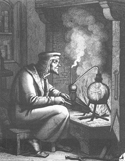
One of the most common legends involves English alchemists, chemical medicine preparers, in the sixteenth century. These alchemists, or chymists, were known for their mystery and magic, and as a sign of their mystery, they combined various chemicals into a colorful concoction to fill the show globes. Later, once apothecaries began using chemicals, they adopted this symbol. Another source claims that the chymists originally used the vessels to distinguish themselves from the apothecaries, who typically used the mortar and pestle as their professional symbol. Then, once chemical medicines were accepted as regular treatment during the eighteenth century, there was little to distinguish between the two professions; thus, the show globe was found where ever medicine was available.
Myth #4: Great Plague Sparks Use of Globes
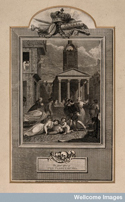
Another popular myth takes place during the Great Plague of London in the mid-seventeenth century. Again, the colored liquids supposedly showed the sick where they could find urgent medical attention. In this myth, the show globe was not only a symbol of a business but it also served an important role in the community as a guide to immediate medical help. While there are many sources stating the British plague as the origin of the show globe, there is little evidence to support this claim. If the previous myth regarding the alchemists in the sixteenth century is true, however, it would be likely that show globes were common by the time of the Great Plague in 1665. While the globes may not have been used as a sign for medical help, it does suggest that the vessels may have been a sign of apothecaries as early as the sixteenth or seventeenth century.
Myth #5: Color-Coded Liquid for Warning or Welcoming
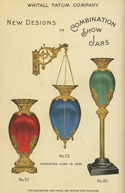
One of the most common myths surrounding show globes depicts the colorful liquid in the vessels as a warning to travelers. Red liquid signaled to the traveler to avoid the town due to a plague or quarantine, while green liquid signaled that all was well. According to this legend, the globes were illuminated at night in order to be seen from long distances.
Myth #6: Criminals Used for Secret Codes
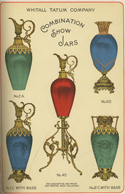
Another myth from the seventeenth and eighteenth centuries does not even involve apothecaries at all. This tale claimed that "charlatans," or criminals that moved often, used carboys to show their cohorts where they could be found. For example, they would send direction to their new location by writing "six candles burning in a coloured lanthorn of orange, white, and blue" or "three lanthorns with candles burning in them upon a balcony". While people may have used the show globes as an easily recognizable landmark for directions, these vessels are strongly associated with the pharmacy profession despite the occasional myth suggesting alternate origins.
Myth #7: Decorative Symbol or Practical Purpose?
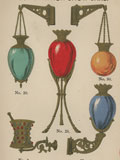
Not only are there myths surrounding the origins of the decorative vessels, but there is also some debate about their use. Most historians agree that the show globes were used solely for attracting customers and as a sign of the profession. Other myths about show globes depict a more practical use. Several sources claim the globes were used for maceration, a process of setting organic material in liquid, placing in sunlight, and allowing the release of chemicals into the liquid. An example of maceration today would be making sun tea, where the tea leaves are allowed to steep in water in the sun. Used for centuries, this process requires a large container (2-3 gallons in size) and direct light for up to several days. The myth suggests that maceration was the original use for the globes, and they eventually evolved into show globes with colored liquids for display. Although maceration is a process used by many professions throughout the centuries, it may not be the original use for the apothecary's show globes as the shop front windows would most likely not let enough light in to effectively macerate.
Myth #8: Pharmacists in Cahoots with Physicians
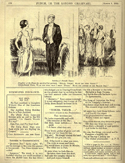
Later, as show globes became more common in apothecaries' windows, new myths developed surrounding their mystery. In "Punch" magazine, author A. P. Herbert commented on the questionable relationship between pharmacists and doctors by portraying the actual contents of the red- and green- filled show globes as "crème de menthe and port," or mint and wine, with a drawing depicting the two professions laughing and enjoying themselves.